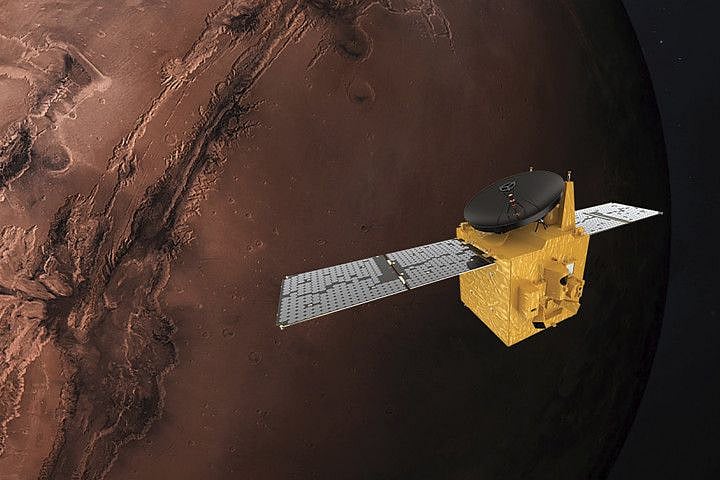UAE mulls extending Hope Probe’s mission in Mars’ orbit
Hope Probe, the first Arab interplanetary mission, has been orbiting Mars for over a year

Dubai: The Emirates Mars Mission (EMM) will soon consider extending the two-year mission of Hope Probe, a year after it successfully reached Mars orbit, EMM Project Director Omran Sharaf has told Gulf News.
Sharaf said the mission – the first interplanetary exploration undertaken by an Arab nation – is for two (Earth) years but the spacecraft (Hope Probe) is designed to last for four years.
“We definitely hope to come up with an extended Mars mission but we cannot decide yet on specific scientific questions until we have all the data or most of the data from the current mission to be able to make a decision on what kind of extended mission will be,” Sharaf said.
Launched from Japan’s Tanegashima Space Centre (TNSC) on July 20, 2020, Hope Probe arrived successfully in orbit around Mars on February 9, 2021, after travelling for 490 million kilometres from Earth for seven months.
Chief mission
The primary scientific mission of Hope Probe is to provide a complete picture of the Mars atmosphere over the span of one Martian year, which is equivalent to two Earth years. It will try to explain why or how Mars is losing hydrogen and oxygen gases into space.
Using three instruments — an ultraviolet spectrometre, a digital camera and an infrared spectrometer, Hope Probe is taking images from the lower to upper atmosphere of Mars and exploring its diurnal or day-to-night cycle, which has never been done before.
Sharaf said the new science questions for the extended Hope Probe mission will depend on the conclusion of the current mission.
He added: “Obviously, we cannot wait until the end of the present mission to do that as we have to start preparing for an extended mission in advance because it will require some mission redesign and we also need to come up with new science questions.”
Data available to all
Since orbiting Mars a year ago, Hope Probe has circled the Red Planet over 170 times, at a rate of one cycle every 55 hours. The data captured by Hope Probe has been made available in two tranches to the global scientific community, with a commitment to continue publishing and making new data available every three months.
Hope Probe has made a number of key new observations of Martian atmospheric phenomena, including the elusive discrete aurora on Mars’ nightside, remarkable concentrations of oxygen and carbon monoxide and never-before seen images of Martian dust storms as they billow across the planetary surface.
Sign up for the Daily Briefing
Get the latest news and updates straight to your inbox
Network Links
GN StoreDownload our app
© Al Nisr Publishing LLC 2025. All rights reserved.